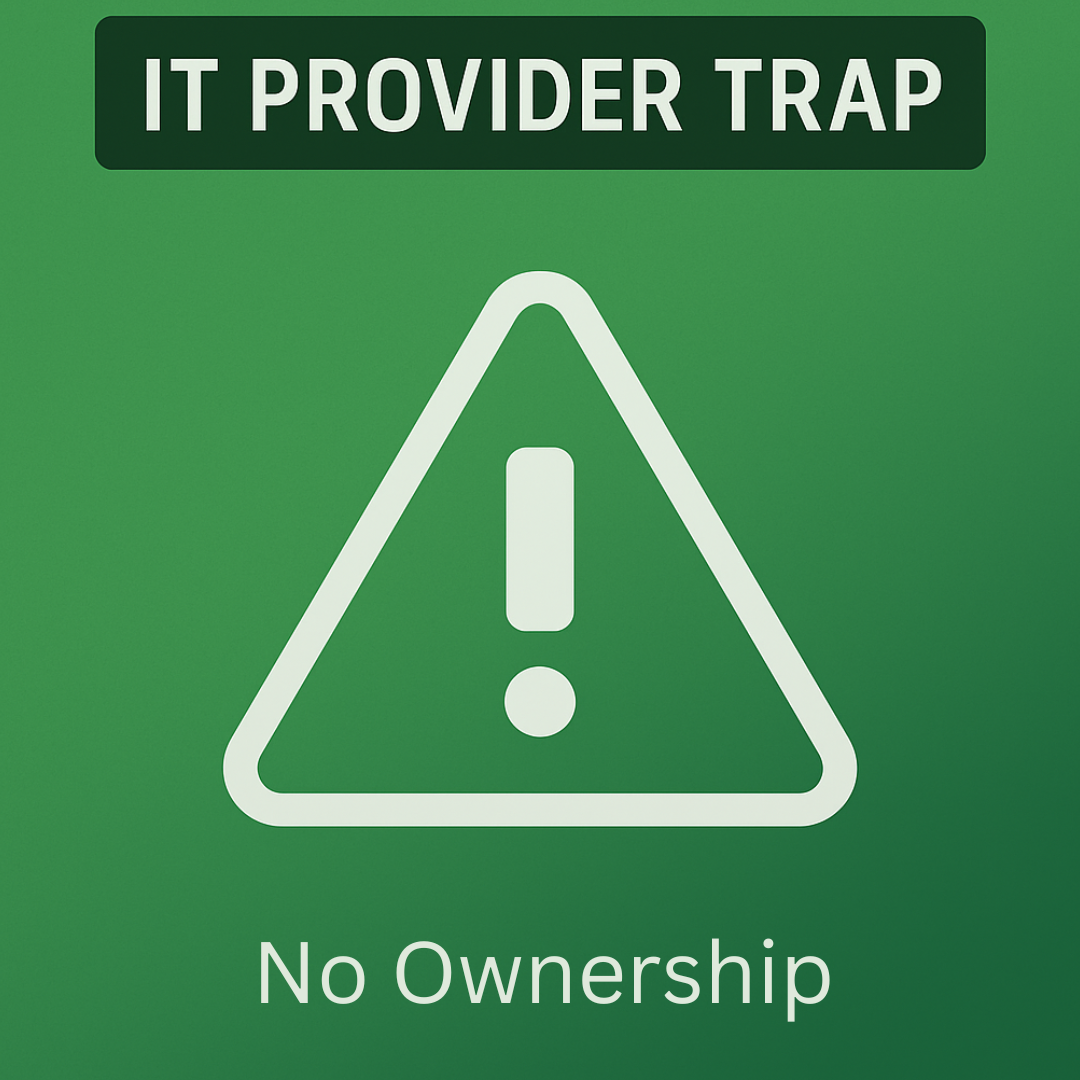When everything is “someone else’s system,” nothing gets fixed. Ownership is the difference between a quick recovery and a week of finger-pointing.
1) Shifting blame instead of solving
“Not our problem.” You’ve heard it. Maybe it’s the software vendor, the internet provider, or “your team.” That might be technically true—but it doesn’t get your business moving again. You don’t care who caused it; you need someone to own the coordination, work the third parties, and keep you informed until there’s a path forward—or a clear, documented reason why there isn’t.
2) No ownership mindset
There’s a difference between closing a ticket and actually solving the problem. Ownership looks like following up with the requester, confirming it’s fixed, and digging deeper when the same issue repeats. If the default is quick fixes, thin notes, or “vending-machine” support, you’ll see the same problems come back—on your time and dime.
3) Collaboration gaps
Real life is cross-vendor: internet, phones, line-of-business apps, identity. Your provider should be the glue—not the bottleneck. If they won’t call other vendors, won’t explain things in plain English, or won’t coordinate handoffs, issues stall in the gaps and you end up running the project yourself.
Quick self-check: is anyone actually driving?
- You hear “not our problem / not our system” a lot
- Tickets close without confirming with the requester
- You’re asked to call Vendor B while Vendor A “looks into it”
- Different answers depending on who you ask
- There’s no named incident lead during outages
If two or more hit, you don’t have an IT issue—you have an ownership issue.
Want the full checklist of red flags (and how to avoid them)? Grab the white paper:
The IT Provider Trap – How to Spot Danger Signs Before Your Business Pays the Price
